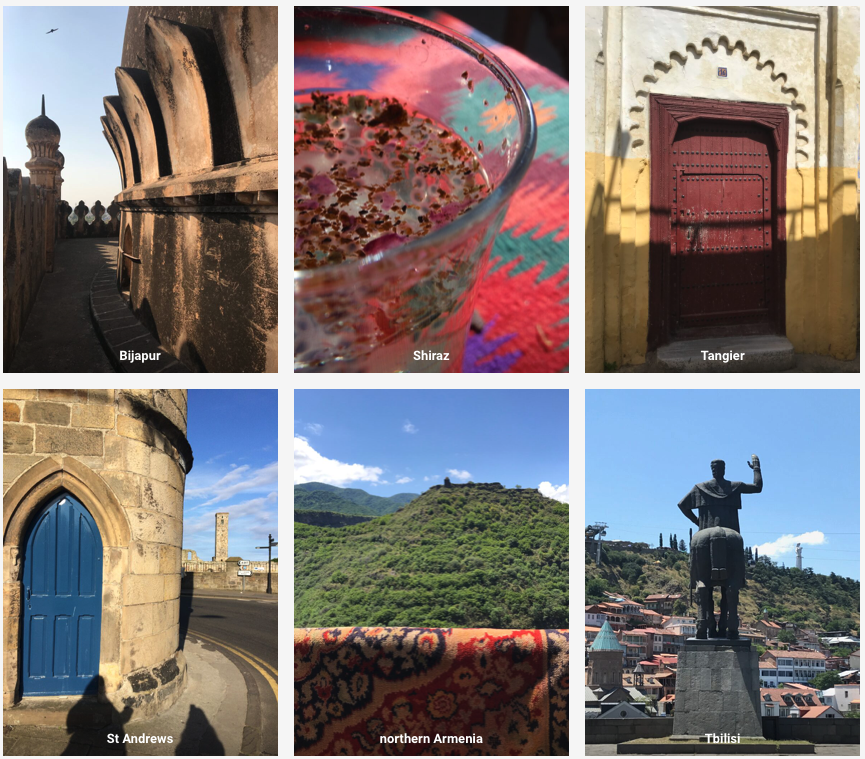Education
- PhD, Islamic Art History, University of California, Los Angeles, 2011
- MA, History of Art, Williams College, 2004
- BA, Art History, James Madison University, 2001
Research interests
- Iran, Central Asia, India, South Asia, Indian Ocean, Persianate
- Indo-Persian worlds (Timurid, Safavid, Deccan sultanate, Mughal)
- Migration, mobility, and cultural flow between Iran and India
- Book arts: manuscripts, albums, painting, codicology
- Life histories (“afterlives”) of buildings, tiles, and manuscripts
- Histories of collecting and display, past and present
- Cultural heritage of Iran: documentation, preservation, dissemination, reinvention
- Persian architecture and tilework
- Present histories of historical monuments
- Travel and tourism in the Islamic world
Dr. Keelan Overton is a historian of art and architecture specializing in the eastern Islamic world from Greater Iran to South Asia. She received her PhD from the University of California, Los Angeles (2011) and her MA from Williams College (2004). She approaches visual culture broadly—urbanism, architecture and the environment, surface revetment (tilework), portable objects, arts of the book, the craft industries, documentary photography and film—and ideally from an interdisciplinary lens.
Since summer 2015, Overton has been an Independent Scholar based in Santa Barbara, California, where she divides her time between research, writing, teaching, and travel. She has taught at UCLA, UCSB, Pomona College, and Occidental College and also served a lecturer on museums tours. Her recent travels as a researcher and lecturer have taken her to the Deccan (southern India), Iran, Morocco, Scotland, Armenia, and Georgia (all 2020 travel was canceled).
Overton previously served as the Curator of Islamic Art at the Doris Duke Foundation for Islamic Art (Shangri La) in Honolulu (2011-12) and as an Associate Curator in the Art of the Middle East department at the Los Angeles County Museum of Art (2014-15). Her exposure to the Shangri La collection in 2003 inspired a longstanding interest in the reviving, collecting, and recasting of Iran’s cultural heritage, particularly during the early twentieth century. This research has been published in West 86th (2011), Doris Duke’s Shangri La (2012), and Arthur Upham Pope and a New Survey of Persian Art (2014).
Overton’s monograph in progress returns to this research and is titled Iran Unglazed: Local, National, and Global Histories of Persian Tilework. This project explores Persian tilework as a potent shapeshifting commodity between the field, museum, photograph, market, and imagination and is geared toward a variety of audiences, including students, specialists, heritage professionals, curators, and travelers. One of the case studies in her book, the Emamzadeh Yahya at Varamin, has been considered through the lens of “present history” (2018-20) in a co-authored article with Kimia Maleki, and she is now developing an online exhibition on the shrine with an international team of collaborators and specialists. In fall 2021, Overton was a Getty Scholar at the Getty Research Institute in Los Angeles (project title: Persian Architecture Fragmented: The Biographies, Trails, and Economies of Iran’s Tiled Surfaces, c. 1820–2020).
Overton’s recent edited volume Iran and the Deccan: Persianate Art, Culture, and Talent in Circulation, 1400-1700 (Indiana University Press, June 2020) features 14 essays by an interdisciplinary cast of 18 scholars specializing in history, art and architectural history, literatures and languages, and book arts and conservation.
Iran and the Deccan emerged out of Overton’s 2011 UCLA dissertation on book arts, painting, and collecting at the Bijapur court of Ibrahim ‘Adil Shah II (r. 1580-1627). Her dissertation has been published as a series of journal articles and essays in edited volumes. This includes a study of Bijapuri paintings in relation to their later Lucknow copies, including an iconic depiction of a Bijapuri shrine that challenges notions of Deccani painting as pure ‘fantasy’ (Indo-Muslim Cultures in Transition, 2012); a consideration of the role of painting and material culture in diplomacy between Ibrahim and Jahangir (Visual World of Muslim India, 2014); a study of book culture in Ibrahim II’s Bijapur, including an initial reconstruction of his library (Muqarnas, 2016); and with Jake Benson, a survey of Deccani seals and inscriptions intended to assist with the reconstruction of the region’s libraries (Empires of the Near East and India, 2019). Most recently, chapter 10 of Iran and the Deccan is the culmination of her multi-year study, with book conservator Kristine Rose-Beers, of a Timurid-Safavid Qur’an manuscript that circulated between at least four courtly contexts in the Deccan (Bijapur, Mughal, Savanur, Mysore) before entering the University of St Andrews in 1806.
